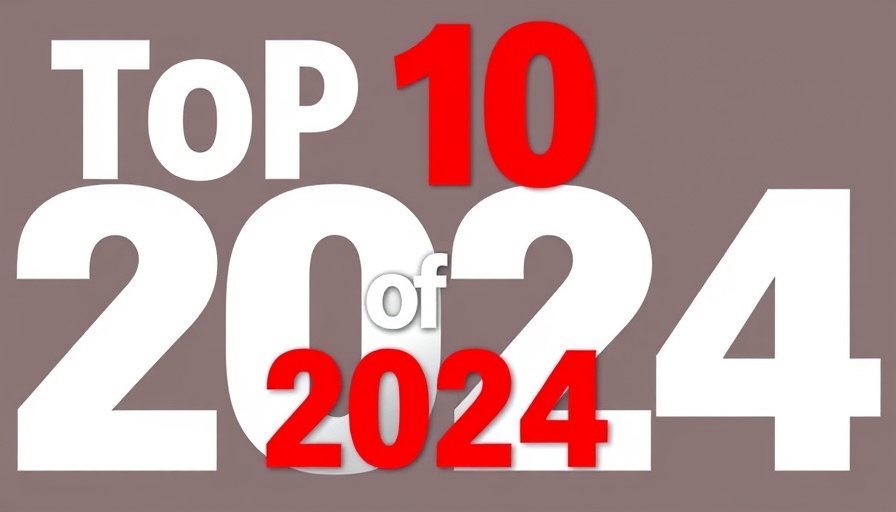
Unveiling the Most Impactful Rural Health Insights of 2024
As we navigate through the fascinating developments within rural healthcare, Rural Monitor has compiled a list of the most-read articles of 2024 that shed light on crucial topics impacting rural communities. This article counts down from #10 to #1, highlighting the valuable insights and discussions that emerged this year.
#10 Strategic Collaboration: The Key to Moving Rural Healthcare Forward
Strategic collaboration has proven to be a game changer for rural health organizations. Groups such as Southern Illinois Healthcare and the Iowa Primary Care Association demonstrate how collective resources can enhance patient outcomes. By sharing best practices and conducting community health needs assessments, these organizations not only connect patients with essential services like food and housing but also foster an environment of mutual support and collaboration.
#9 Growing the Rural Physician Workforce: A Historical Perspective
Rural areas are facing a striking physician shortage, predicted at 56% by the year 2036. Articles detailing the effects of federal funding and policy shifts over the last century reveal how projected improvements in rural graduate medical education could alter the landscape of healthcare in these communities. This historical context is vital as we seek effective methods to recruit and retain rural physicians.
#8 Filling Resource Gaps for Autism in Rural Communities
Access to autism resources is crucial, especially in rural settings where services are often limited. Articles exploring the role of primary care providers in fulfilling these needs highlight innovative approaches to support families dealing with Autism Spectrum Disorder (ASD). Timely interventions can make substantial differences in outcomes for these children, underscoring the importance of accessible and comprehensive care.
#7 Addressing Postpartum Care Needs in Rural Motherhood
The rise in maternal deaths within the U.S., particularly in rural areas, is alarming. Addressing postpartum care has become a priority due to increasing challenges in access. Rural communities must create robust support systems to ensure that new mothers receive needed healthcare post childbirth, emphasizing the need for a comprehensive approach to maternal health.
#6 Tackling Hoarding Disorder in Rural Environments
Hoarding disorder can pose significant health risks and create an unsafe living environment. An article shedding light on this often-overlooked issue within rural communities reveals the struggles faced in diagnosing and treating individuals affected by hoarding behavior. Sharing awareness and resources can pave the way for more effective interventions.
#5 Economic Development Tied to Rural Health Vision
Rural hospital leaders are increasingly linking economic development with community health improvement. By recognizing the impact of their infrastructure and investment strategies on population health, they can enhance patient care while improving financial sustainability. This paradigm shift is crucial for long-term growth in rural healthcare.
#4 Produce Prescription Programs: A Holistic Approach
In recent years, programs that prescribe healthy food as a means to combat food insecurity and diet-related diseases have gained traction. Although still emerging in rural areas, existing initiatives show remarkable success stories. They are enhancing eating habits and integrating local food systems, demonstrating the power of nutrition in promoting health.
#3 Combating Loneliness in Rural America through Social Infrastructure
Loneliness and social isolation top the list of concerns in rural communities. Articles discussing 'social infrastructure' explore potential solutions, emphasizing community engagement and resource allocation to create supportive environments. Understanding the psychological and social challenges rural residents face is vital for mitigating isolation.
#2 Telehealth Expansion: Making Connections
The COVID-19 pandemic prompted a rapid expansion of telehealth, and its impact is particularly notable in rural regions. As a lifeline for many patient populations faced with geographical barriers, telehealth is reshaping how healthcare is delivered. This digital transformation opens new avenues for healthcare access and is likely to reshape rural health policies moving forward.
#1 Enhancing Senior Access to Care
With an increasingly aging population in rural areas, ensuring seniors have access to healthcare is critical. This year's top article emphasizes the unique challenges faced by older adults and proposes innovative solutions to bridge gaps in access and services. The engagement of stakeholders at all levels is essential to fostering an age-friendly environment in remote areas.
Call to Action: Collaborate for Better Rural Health
As we reflect on these pivotal topics, we encourage healthcare providers, administrators, and community leaders to engage in meaningful partnerships that foster collaboration and innovation in rural health. Understanding these challenges is the first step toward finding solutions and improving health outcomes for underserved populations.
 Add Row
Add Row  Add
Add 




Write A Comment